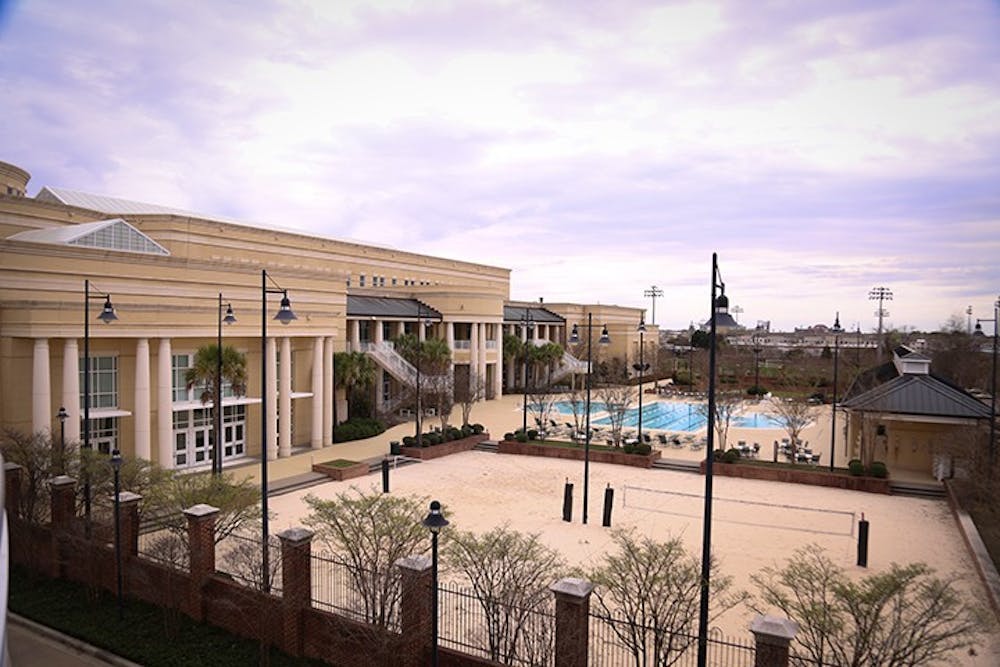USC athletics alumni, including Natasha Hastings, Cheslie Kryst and Marcus Lattimore, called for the Strom Thurmond Wellness and Fitness Center’s name to change at Friday’s meeting of the Presidential Commission on University History.
Kryst, a former track and field athlete and current Miss USA, began the discussion with a denouncement of Thurmond’s legacy.
“He obviously supported segregation, he opposed civil rights laws, over and over again, and there are also many sexual assault allegations against him,” Kryst said. “Now, of course, it's important that he reversed course at the end of his life and career because we all deserve the chance to grow and learn from our mistakes, but his earlier choices ... should absolutely exclude him from having his name on a building on the campus of the University of South Carolina.”
Given this legacy, Kryst said, the gym’s name doesn’t reflect the time we’re in.
“If the Wellness and Fitness Center were being named today, post-MeToo, post-TimesUp and in the middle of unrest following George Floyd’s murder, Thurmond’s name would have been quickly removed from consideration, so there's no reason to allow the name to remain when it just wouldn't have been a contender today,” Kryst said.
Two-time Olympic gold medalist Hastings, once a track and field athlete at USC, followed with a brief statement.
“While Carolina was a place that I called home for three and a half years, it never felt truly like home, knowing racists and bigots were memorialized and they were celebrated on campus,” Hastings said.
Hastings said that, when possible, she would avoid entering the center, saying it gave her an “uneasy feeling.”
Finally, former quarterback Marcus Lattimore, now the director of player development for the university’s football team, recalled when he and his teammates would go to Strom.
“Most of [my teammates] were Black, and I found it odd that nobody seemed to care that we were walking in a place that he would have never wanted us to enter. So, I did not care,” Lattimore said.
This complacent attitude, Lattimore said, would continue even as he recruited student athletes.
“As I chauffeured a family through the Wellness Center, someone recognized the name, and in a voice of disbelief uttered, ‘This is okay for y’all?’ My response was what came naturally: ‘It’s just how it is,’” Lattimore said.
Afterwards, Lattimore did research into South Carolina’s recent history, including the governorship of segregationist James F. Byrnes, and grew to find this complacency “unacceptable,” he said.
Now, Lattimore said he considers the Strom Thurmond Wellness and Fitness Center “an obstacle that impedes our advancement of society.”
“We cannot run from the fact that Mr. Thurmond's ideals were divisive. That is not equality. That is not inclusion. That is not empathetic, and most importantly, that is not what we represent as a university,” Lattimore said.
In addition, Presidential Community Service Award recipient Christopher Campbell, also a track and field alumnus, sent a statement from Portugal. Moe Brown, former football player and now a congressional candidate, delivered a statement, too.
The decision to change the center’s name will come down to the state legislature, which must vote in a two-thirds majority to repeal the Heritage Act in order for the name to change.
After the alumni’s speeches, Jennifer Gunter, the director of the South Carolina Collaborative on Race and Reconciliation, advocated for them to appear in front of the state legislature in order to deliver their statements, calling the alumni's arguments "the persuasion that's needed" to reach the two-thirds majority. The idea was seconded within the committee.
Additionally, the commission’s subcommittee on historical naming put forward five buildings’ namesakes: Thomas Cooper, Wade Hampton, James Thornwell, Francis Lieber and Strom Thurmond. These names will be used to determine how to remove problematic building names in the future.
The committee said the changes could extend beyond buildings and into classrooms, portraits and sculptures.

